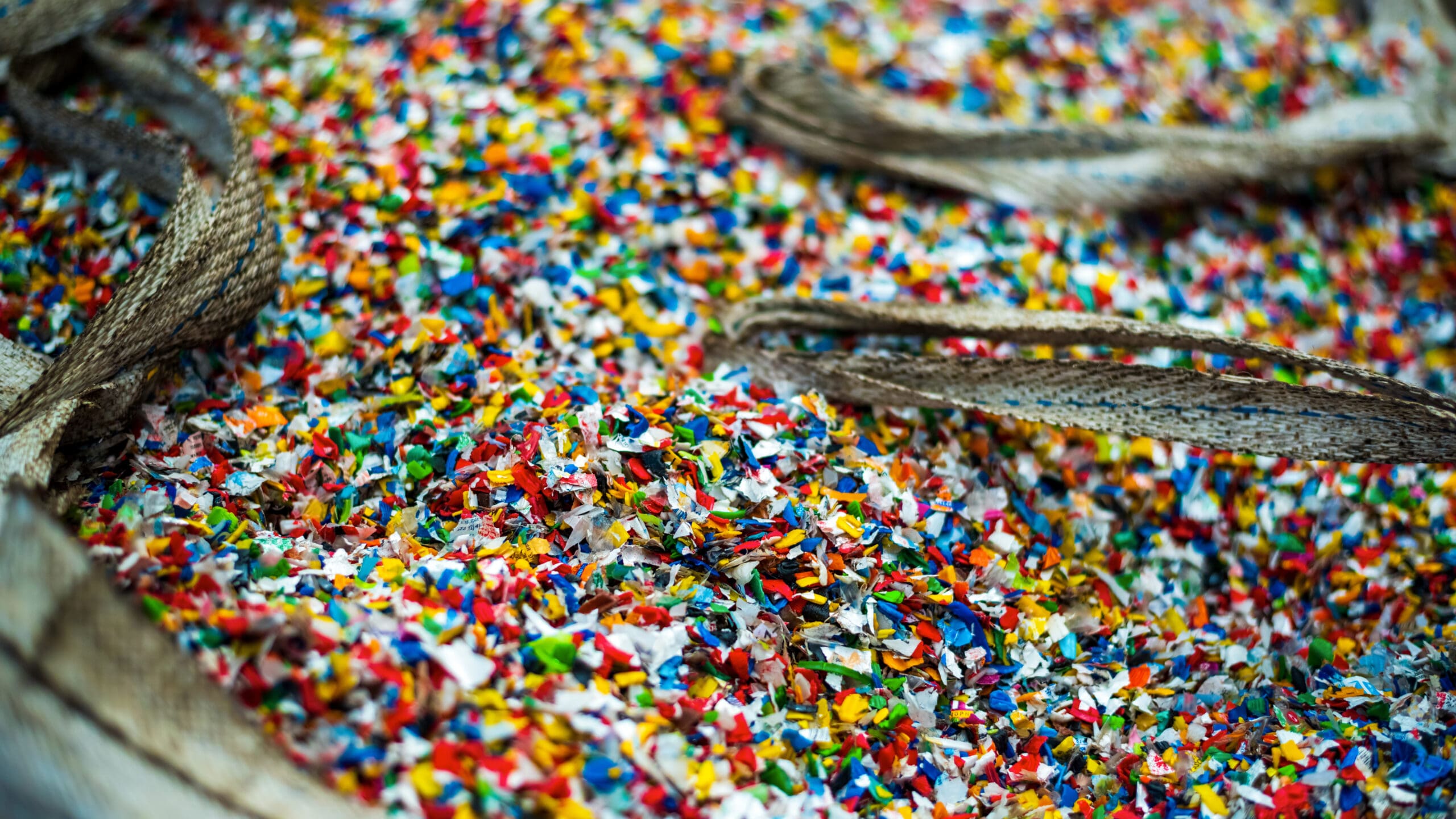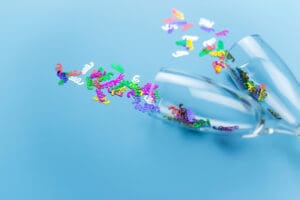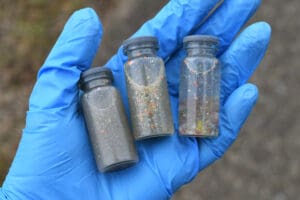
Microplastics vs Nanoplastics: What’s the Difference?
In the ongoing battle against plastic pollution, two foes have emerged as increasingly concerning threats to the environment and human health: microplastics and their even smaller counterparts, nanoplastics. With growing awareness of the detrimental impact of plastic on our ecosystems, it’s essential to understand the nuanced differences between these two types of pollutants and the distinct dangers they pose.
As proponents of clean, pure drinking water here in Houston, TX, Artesian Bottleless Water sheds light on the key differentiators between microplastics and nanoplastics, explores their environmental implications, and highlights ways we can take action to prevent these particles from showing up in your company’s drinking water.
Understanding Microplastics
Origin and Characteristics
Microplastics are plastic particles ranging in size from 5 millimeters to 100 nanometers. They come from various sources, such as the breakdown of larger plastic debris, clothing fabrics, cosmetic products, and industrial processes. Their small size means they are often too tiny to be effectively filtered out by most sewage systems and can easily pass through water treatment plants, entering the environment in vast quantities. Without the proper filtration, these microplastics eventually make their way to your tap.
The transformation of larger plastic debris into microplastics is a process significantly fueled by physical, chemical, and biological factors. Over time, plastics exposed to the elements such as sunlight, wind, and water undergo photodegradation, where ultraviolet light from the sun breaks down the chemical bonds in plastic. This degradation, coupled with mechanical action from waves, sand, and wind, gradually fragments the plastics into smaller and smaller pieces. Additionally, certain chemicals and pollutants in the environment can further accelerate the breakdown of plastics, making them more susceptible to fragmentation. Biological factors also play a critical role, as microorganisms and marine life can ingest larger plastic pieces, which can lead to physical breakdown or excretion as smaller particles. The culmination of these processes leads to the proliferation of microplastics in our environment, making their way into waterways, soil, and, eventually, the food chain.
Environmental Impact
The impact of microplastics on the environment is profound. These particles are ingested by a variety of marine organisms, from zooplankton to larger fish species, causing physical harm and potentially transferring toxic pollutants through the food chain.
For example, when fish and seafood, already contaminated with microplastics, are consumed by humans, these plastics enter our bodies. Research is still ongoing to fully understand the health implications of microplastics on humans. However, the potential for harm is clear, as these particles can carry pollutants and toxic chemicals that adhere to their surfaces. These substances can originate from the plastics themselves or from the surrounding water and then potentially leach into human tissues, posing threats such as endocrine disruption, digestive issues, and even carcinogenic effects. This interconnected web of consequences highlights the urgent need for strategies to mitigate microplastic pollution and safeguard marine ecosystems, which are integral to global food security and human health.
Exploring Nanoplastics
Definition and Characteristic
Nanoplastics, on the other hand, are particles at the scale of 0.001 to 0.1 micrometers—a thousand times smaller than a millimeter. They are either directly released into the environment, such as microbeads from personal care products, or result from the further degradation of microplastics.
Their small size and unique chemical properties raise specific concerns regarding their behavior in ecosystems and possible toxicity. The unique chemical properties of nanoplastics, which include their increased surface area to volume ratio compared to larger plastic particles, allow them to absorb and carry higher concentrations of hazardous chemicals such as heavy metals and organic pollutants.

This makes them potentially more toxic to marine organisms and ecosystems. Current research suggests that these minute particles can easily penetrate cells and tissues, causing oxidative stress, inflammation, and other negative health effects in marine life. Studies are also exploring the potential for nanoplastics to cross biological barriers in humans, such as the blood-brain barrier, which could lead to unprecedented health implications. However, the true extent of their impact remains largely unknown due to the nascent stage of research on nanoplastics. This uncertainty underscores the urgent need for further investigation into their environmental behaviors, bioaccumulation, and pathways of exposure to both humans and wildlife. The complexity of their interactions within ecosystems presents a significant challenge for scientists aiming to predict and mitigate their effects on global health and biodiversity.
Impact on Ecosystems and Health
Effects on Marine Life
Both microplastics and nanoplastics pose significant threats to marine life. They can block digestive tracts, reduce caloric intake, and cause a false feeling of being full, leading to starvation. These particles are also known to accumulate and adsorb toxic pollutants, posing a secondary hazard for marine species. Today, it’s currently estimated that 100 percent of the world’s sea turtles have plastic in their stomachs, and sea birds, like the Great Albatross are dwindling in population due to the consumption of plastic.
Human Health Implications
While the direct impacts on human health are still being researched, scientists are concerned that the accumulation of microplastics and nanoplastics in the food chain could have far-reaching consequences. Seafood, for example, could be a vector for microplastics to enter our diets, with potential implications for gastrointestinal health and toxicity from adsorbed pollutants.
In recent studies, microplastics have been found in human heart tissue, placentas, and blood samples. While the effects are still being studied, there’s no doubt that this presence of unwanted nano and microplastics is bound to have health effects for years to come.
Mitigation Strategies
Federal Mitigation Strategies
The United States federal government has implemented several strategies to mitigate the impact of microplastics and nanoplastics on the environment and public health. One significant move is the passage of the Microbead-Free Waters Act of 2015, which prohibits the manufacturing and distribution of cosmetic products containing plastic microbeads. This represents a crucial step in reducing the direct input of microplastics into aquatic ecosystems.
Further, the U.S. Environmental Protection Agency (EPA) has been actively involved in research and funding initiatives aimed at understanding and combating the proliferation of microplastics and nanoplastics. The EPA’s Trash-Free Waters program seeks to prevent the discharge of trash, including plastics, into U.S. waters, thereby reducing the amount of plastics that can degrade into micro and nanoplastics.
Additionally, the National Oceanic and Atmospheric Administration (NOAA) plays a critical role through its Marine Debris Program by focusing on identifying, removing, and preventing marine debris. NOAA’s efforts include funding research on the impacts of microplastics on the marine environment and supporting community-driven removal projects to clear waterways of plastic debris.
Interagency collaboration is also a key feature of the federal response, exemplified by the U.S. Federal Strategy for Addressing the Global Issue of Marine Litter. This strategy involves multiple government agencies working together to enhance global engagement, improve our understanding of marine litter, and reduce waste generation.

Corporate Mitigation Strategies
Reducing Microplastics in Drinking Water Sources
Companies play a critical role in combating the proliferation of microplastics, particularly in safeguarding our drinking water sources. One innovative approach is the investment in bottleless water coolers and advanced filtration systems within their premises. Bottleless water coolers, which connect directly to the water supply, significantly reduce the reliance on single-use plastic bottles, thereby decreasing plastic waste that could potentially degrade into microplastics. Furthermore, these coolers often come equipped with state-of-the-art filtration technologies capable of removing contaminants, including microplastics, from tap water.
By providing employees with access to cleaner, safer water, companies not only enhance workplace health but also take a proactive stand against the global issue of plastic pollution. This initiative, along with corporate advocacy for broader environmental policies and practices, can lead to substantial reductions in microplastic consumption and underscore a commitment to sustainable, eco-friendly business operations.
We Can Do Better
The presence of microplastics and nanoplastics in our environment is a stark reminder of the long-lasting consequences of our plastic consumption and waste disposal habits. Reducing plastic on a large, global scale feels a bit daunting. But right here at home, Artesian Bottleless Water in Houston, TX, is making waves, helping businesses across the United States eliminate their dependency on plastic jugs and bottles. In their place, we offer state-of-the-art bottleless water coolers and ice machines that filter out 99% of harmful water contaminants.
So, you don’t just get pure, clean drinking water that’s free of micro and nano plastics; you also take one more step toward limiting our dependency on plastic. Don’t wait! Get started today with a free 7-day trial.



